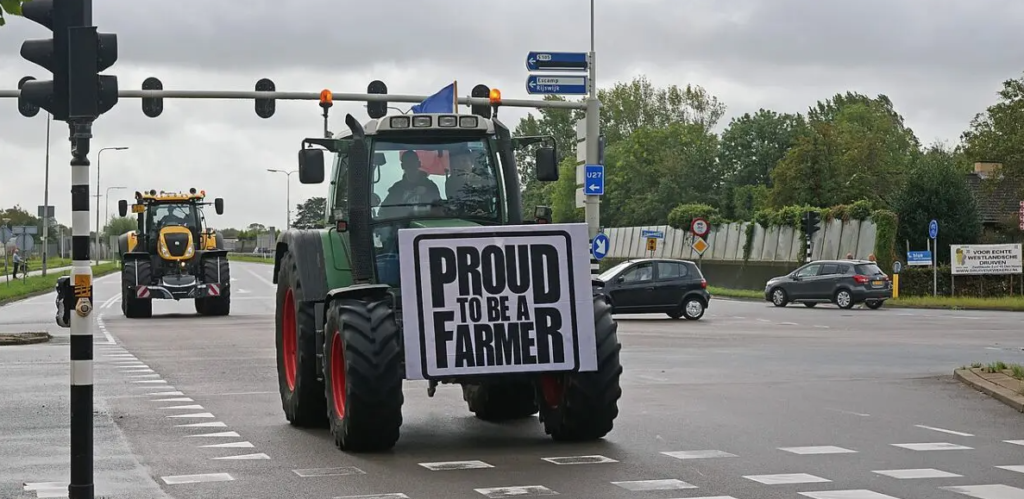The most radical measure ever proposed to restore the nitrogen cycle falters under the pressure of the protest of the Dutch farmers
The protest of the Dutch farmers broke into the senate and won more seats than the premier’s party. Yesterday’s regional elections marked the entry into the upper house of the new populist party BoerBurgerBeweging (BBB), the Farmer-Citizen Movement that acts as a megaphone to the demands of farms and large farmers in the Netherlands. A front that has been fighting for 4 years now against the government’s proposal to halve the number of cattle to reduce nitrogen pollution on land.
Electoral exploit
In the regional elections in the 12 Dutch provinces, citizens not only choose their local representatives but indirectly also senators (they will be nominated by local politicians in two months’ time). According to projections, the BBB would have managed to get 15 seats out of 70, while Premier Mark Rutte’s party would have dropped from 12 to 10 senators.
A result that calls into question the political capacity of the government to carry out the reform of livestock farming. And it allows the party to monitor parliamentary proposals. “No one can ignore us anymore,” BBB leader Caroline van der Plas told a Dutch radio station. “The voters have spoken out very clearly against the policies of this government“. So far, the Peasant-Citizen Movement had obtained just 1 seat in parliament in the 2021 elections.
The protest of Dutch farmers
It all starts in 2017. A small NGO, Mobilisation for the Environment, turns to the European Court of Justice to denounce the shortcomings in the governmental system of nitrogen pollution prevention in Natura 2000 areas, mandatory under the Habitats Directive. The year after comes the judgment: the Dutch rules are too bland, says the Court, in an opinion that is then confirmed in May 2019 by a Dutch administrative court. Here comes the first shake-up: the decision freezes all nitrogen release permits on the grounds, affecting about 18 thousand between farms, construction sites and other projects.
A committee of experts appointed by the government suggests two solutions: reducing speed limits (to limit NOx) and acting on farms. If the first measure affects only 6% of nitrogen pollution, agriculture and livestock are responsible for 46% of excessive nitrogen concentrations. This is where the government’s proposal (formulated by Tjeerd de Groot of D66) to halve the number of cattle in the country to comply with the European Court of Justice’s ruling comes from. It is the second shock: the spark that triggers the protest of Dutch farmers.
A long line of tractors marches on The Hague on 1 October 2019, reaching the city, blocking traffic (queues in all reach 1,000 km), occupying public spaces and destroying signs and urban furniture in some areas. It is the first of many similar protests that will happen over the years, then intertwining with other motives (with the pandemic and the movement against lockdowns and vaccines) and inspiring similar protests elsewhere, from Belgium to Canada.
The government falters, but after the new elections of 2021 Prime Minister Rutte propose a radical cut in livestock. And with it continues the protests, the last on March 11 this year, always in The Hague, where alongside the breeders also parade Samen voor Nederland (Together for Holland) and other movements born as anti-lockdown and then transfigured into anti-establishment.
What does the government want to do about nitrogen pollution?
Holland is just as big as Lombardy and Veneto and has only 17 million inhabitants, but it has to support about 100 million head of cattle. A very high density that weighs on the nitrogen cycle – it arrives in the ecosystems in the form of ammonia contained in sewage and manure – and puts the country at the 1° place in Europe for meat exports.
The latest version of the proposed law to halve the concentration of nitrogen in soils provides for a wide range of support measures to farmers during the transition phase. It remains the central goal, the -50% by 2035, but tempered by 25 billion of incentives to farmers to transfer their business to less polluted areas or to abandon it altogether. Support is also provided for those who choose to leave an intensive model of breeding in favor of an extensive one.
There is no obligation for farmers: the choice between exploiting the incentives or continuing as before is totally free. But on the table remains an extreme option that the government can activate if the target is not reached: the recourse to expropriation.

